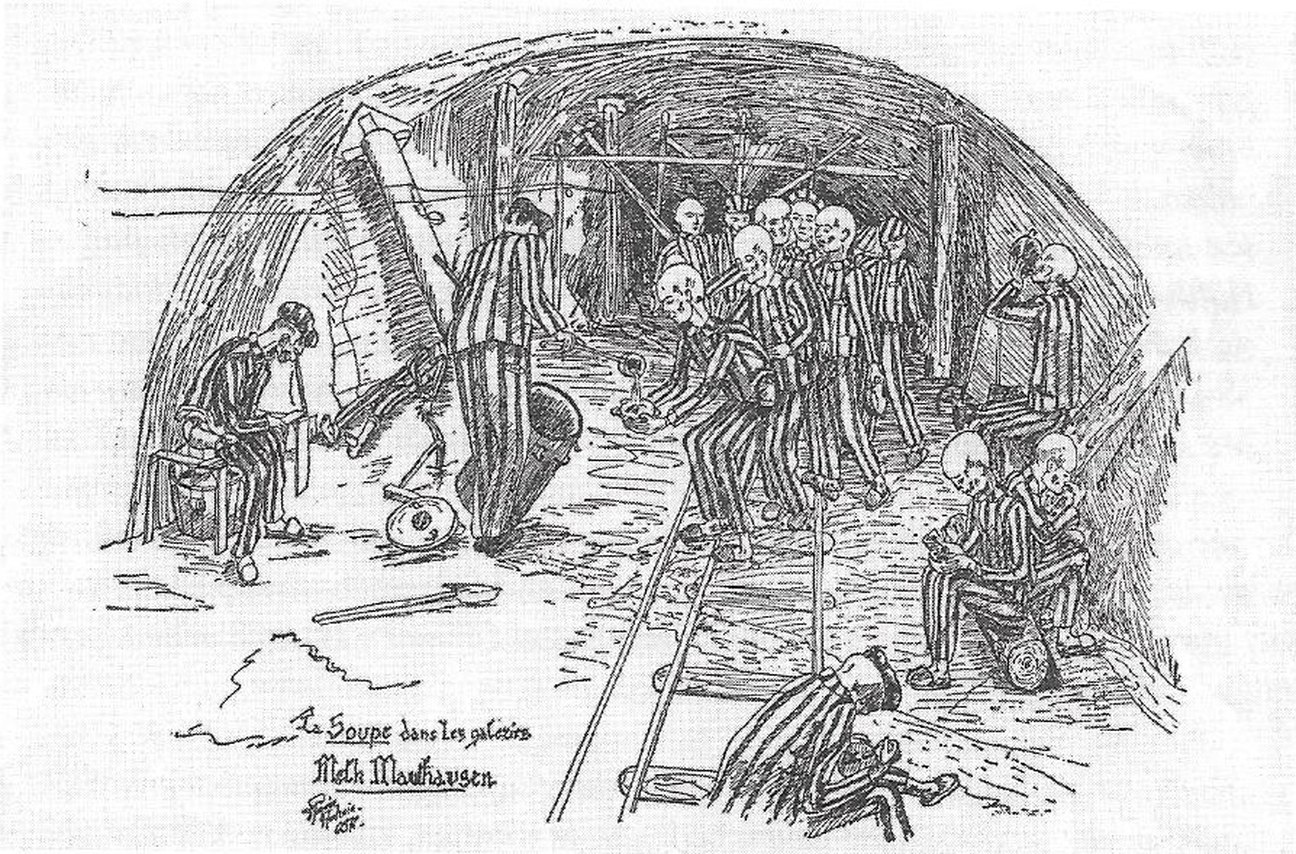The concentration camp prisoners in Melk

The 14.390 all male prisoners who were forced to work in the satellite camp of Melk came from more than 26 different countries.
The largest national groups consisted of Poles, Hungarians, Frenchmen, Soviet citizens, Germans, Italians, Greeks and Yugoslavs. Because of the incomplete source material, the share of the respective national groups in the total number of prisoners in Melk can only be determined approximately. About 35-40 percent of the concentration camp prisoners came from Hungary, 25-30 percent from Poland, 10 percent from France, 5 percent from Germany (incl. Austria) and the remaining 15-25 percent from the other nations.
Most of the prisoners were put in the concentration camp because of political or racial reasons, about a third of them were classified as Jews. All of the prisoners were transported to Melk on request of the companies Steyr-Daimler-Puch and Quarz to be forced to work in the tunnel construction, and sometimes the headquarters in Mauthausen couldn’t even provide the number of forced laborers required by the armaments industry. Among other things, this was a reason that, the longer the camp existed, the more the question of “physical ability to work” faded into the background. In January 1945 119 children under the age of 15 years were transferred to Melk for forced labor. Although month after month hundreds of prisoners died because of the extremely bad living and working conditions or were brought back to the main camp of Mauthausen due to “inability to work”, the number of prisoners in Melk rose to more than 10.000 by the end of January. For comparison: at the beginning of the Second World War in 1939 the town of Melk had a population of 4.670, on 1st January 2017 it was 5.390 persons.
The chances for survival of the individual prisoners in the camp depended primarily on racial criteria according to which the SS behaved differently towards prisoners. While prisoners of German origin were on the upper part of the scale, followed by prisoners coming from North or West European countries, Poland or the Soviet Union, prisoners of Jewish faith and so-called “gypsies” – regardless of their nationality – found themselves on the lower part. In satellite camps like Melk which were oriented towards forced labor for the armaments industry, the scale had a certain permeability, if a person had special professional qualifications. Skilled craftsmen tended to have better positions within the camp society than unskilled workers.
The former Melk camp prisoner Shaul Schpilmann describes his experiences as a child in the concentration camp.